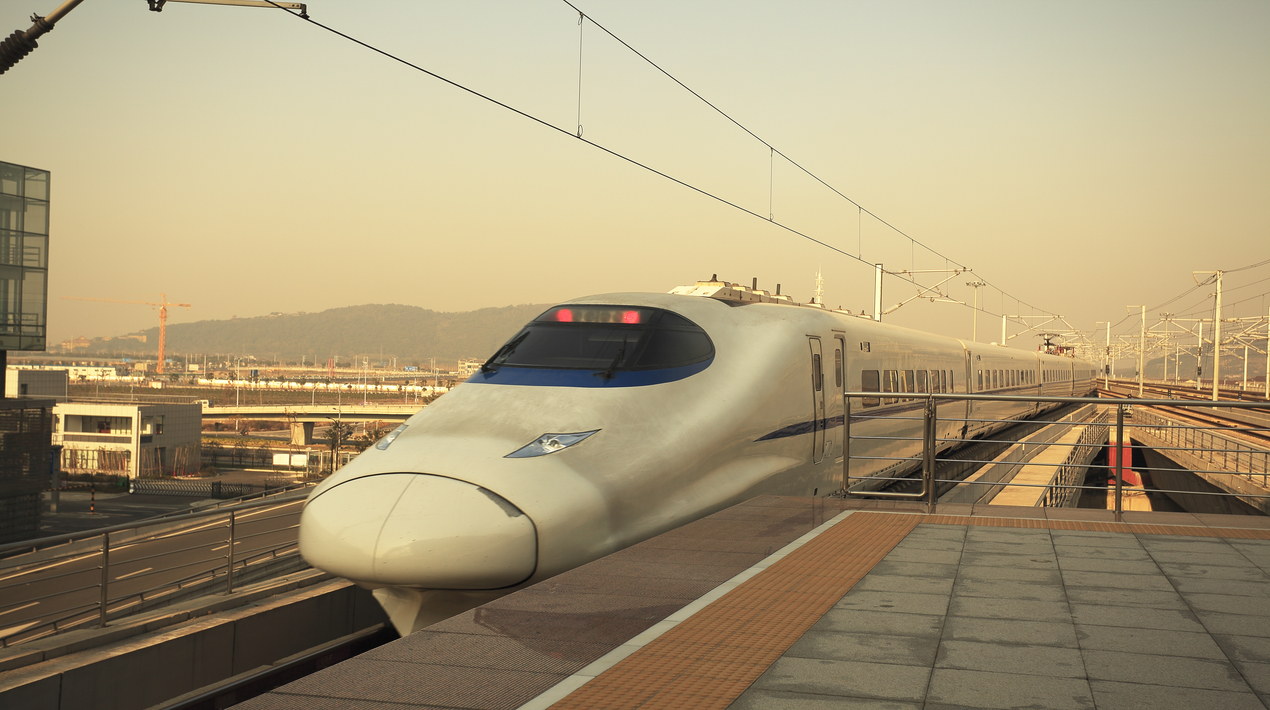
According to a letter from the Guangdong Development and Reform Commission, the construction planning for the second high-speed railway between Shenzhen and Guangzhou has been listed in a state plan. The letter is a response to provincial lawmakers’ proposals to the recent Fourth Session of the 13th Guangdong Provincial People’s Congress. The railway will have a terminal in Shenzhen Bao’an International Airport, running through Dongguan to Guangzhou, with stations at Guangzhou South, Guangzhou, Guangzhou East and Guangzhou Baiyun Airport.
In the letter, the proposal on building a high-speed rail linking Shenzhen and Guangzhou’s urban areas to ensure high-frequency trips between the two cities within one hour is positively significant. The commission will organise related organisations to make preliminary studies over the railway’s function, operation speeds and route designs.
The new high-speed rail will use maglev technology, with a top speed of 600 kilometres per hour. It will enable trips between the central urban areas of Shenzhen and Guangzhou to be shortened to 15 minutes. The Shenzhen Development and Reform Commission released a bidding notice in November 2019 to seek research on maglev rail-related issues. The subjects include the present level of maglev technologies, roles of a new Guangzhou-Shenzhen line, passenger flows, route designs, investment estimates and operation cost.
The trip between the urban areas of Shenzhen and Guangzhou is about 150 kilometres and takes about two hours by car. At present, there are three railways, namely Guangzhou-Shenzhen Railway, Guangzhou-Shenzhen-Hong Kong Express Rail Link and Guangzhou-Dongguan-Shenzhen Intercity Rail running between the two cities. It takes 59 minutes for the fastest train to run along Guangzhou-Shenzhen Railway.
The time for high-speed trains running between Shenzhen North Railway Station and Guangzhou South Station on Guangzhou-Shenzhen-Hong Kong Express Rail Link is 29 minutes. It takes 70 minutes for trains to run along the Guangzhou-Dongguan-Shenzhen Intercity Rail between Guangzhou East Station and Shenzhen Airport Station.
Experts said that If the second high-speed rail is designed at a top speed of 600 kilometres per hour, it will nearly double the speed of the current Guangzhou-Shenzhen-Hong Kong Express Rail Link.
According to an article, China went from having no high-speed railways at the beginning of the 21st century to the world’s largest network of high-speed railways today. China’s ambition is to make high-speed rail the mode of choice for domestic long-distance travel, but these new railways have a much greater significance.
The railways are a symbol of the country’s economic power, rapid modernisation, growing technological prowess and increasing prosperity. A high-speed rail is also a powerful tool for social cohesion, political influence and the integration of disparate regions with distinct cultures into the mainstream.
China has been aggressively deploying tech to make its rail networks smarter and more efficient as early as 2018. Hang-Shao-Tai Railway, China’s first high-speed rail transit project was projected to become the country’s first high-speed railway that uses artificial intelligence in its operation. The project, slated for completion in 2021, will connect the cities of Hangzhou, Shaoxing and Taizhou in eastern Zhejiang province.
Last year, China State Railway Group revealed its railway plan which sets out development goals and major tasks to be achieved by 2035 and 2050. This included a national railway network exceeding 200,000 kilometres and a smart railway using 5G technology and the BeiDou Navigation Satellite System (BDS). Both BDS and 5G will be used to form an integrated train control system using data collected from both land and space.
The nation initially relied on high-speed technology imported from other countries to establish its network. However, over the last decade, China’s domestic companies have developed into world leaders in high-speed train technology and engineering due to the astonishing expansion of their home network.
China has been focusing on inventing domestic technology to reduce the reliance on imported technology and empower national companies. As reported by OpenGov Asia, a Chinese technology firm is planning to launch two ultra-high-speed (UHS) memory controllers in the market. The firm claims that its domestic product has performance on par with similar products from other leading global memory chip manufacturers.
















